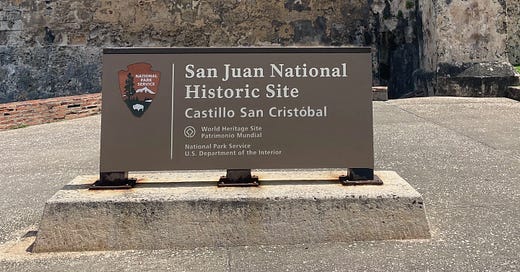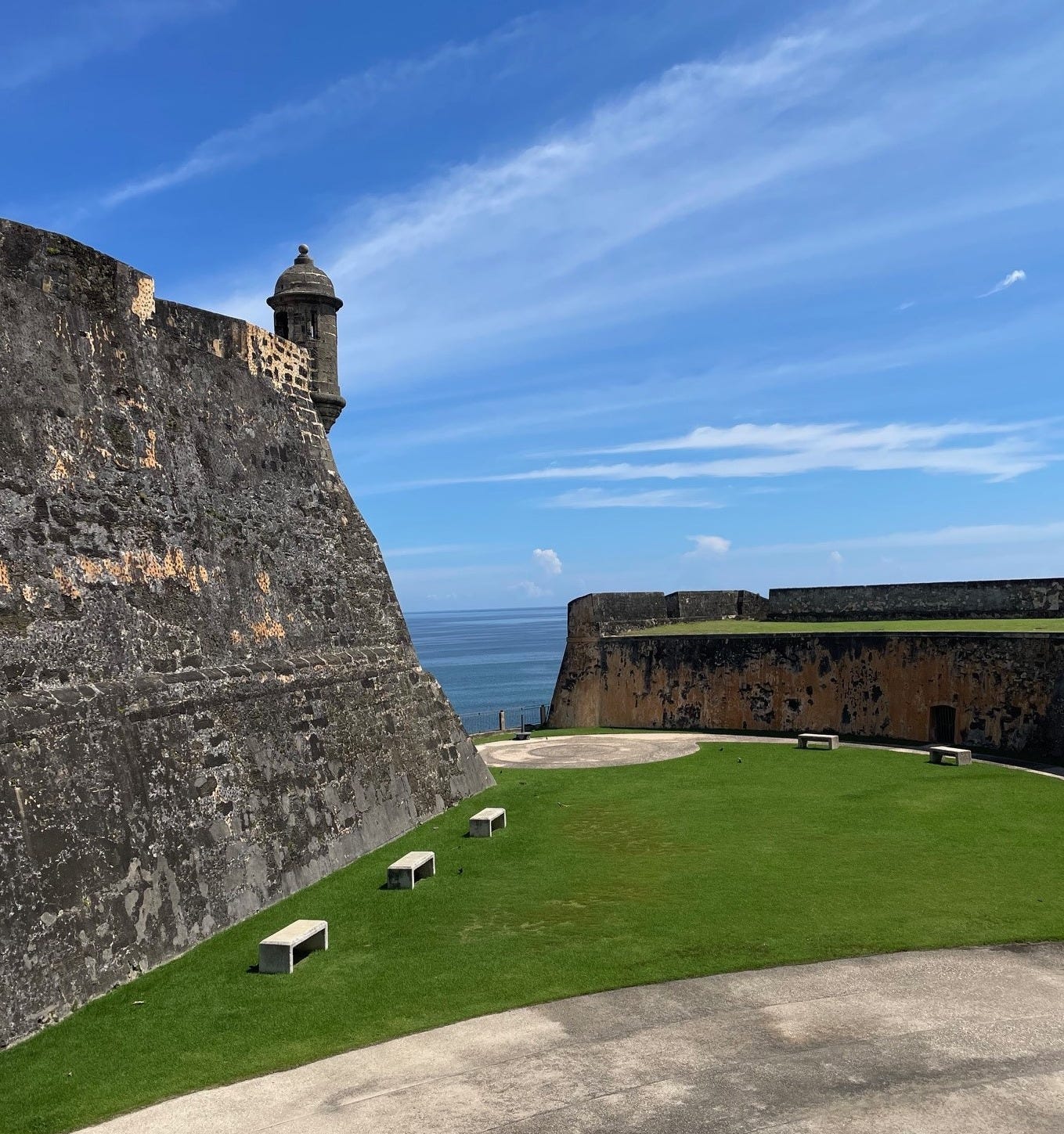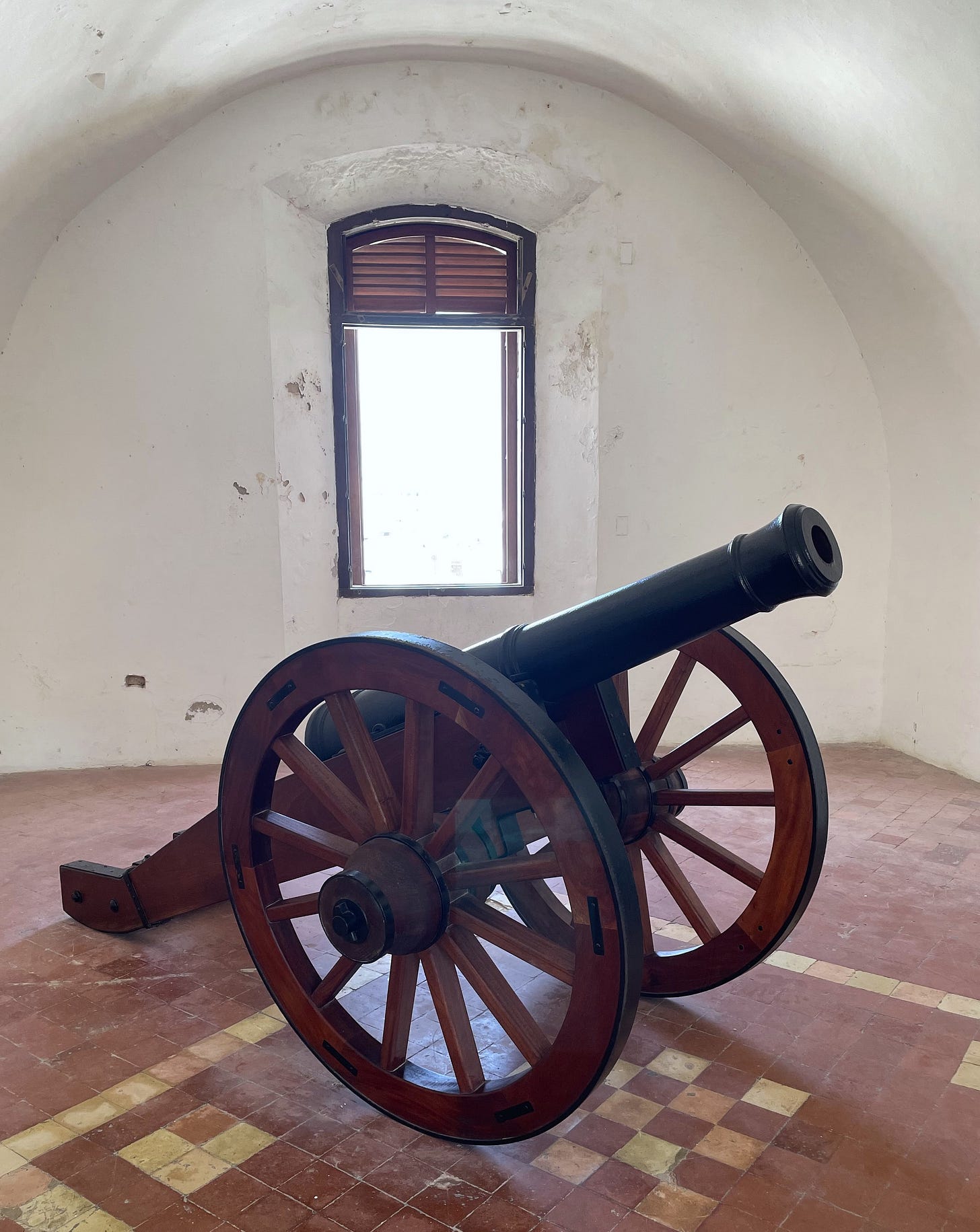This place is massive, an impressive display of military engineering.
Construction started in 1634, continued for the next 150 years and was finished in 1784.
El Morro already existed, on the city’s northwestern tip, protecting the bay from naval attacks by European enemies.
However, after Dutch forces invaded the isleta by land in 1625, another fortress on the eastern side was necessary to prevent further attempts at conquering San Juan.
It was built on the Cerro de San Cristóbal, a hill named in honor of Saint Christopher, the patron saint of travelers.
It’s considered the most extensive Spanish fortification in the Americas and was designated a World Heritage Site by the United Nations in 1983.
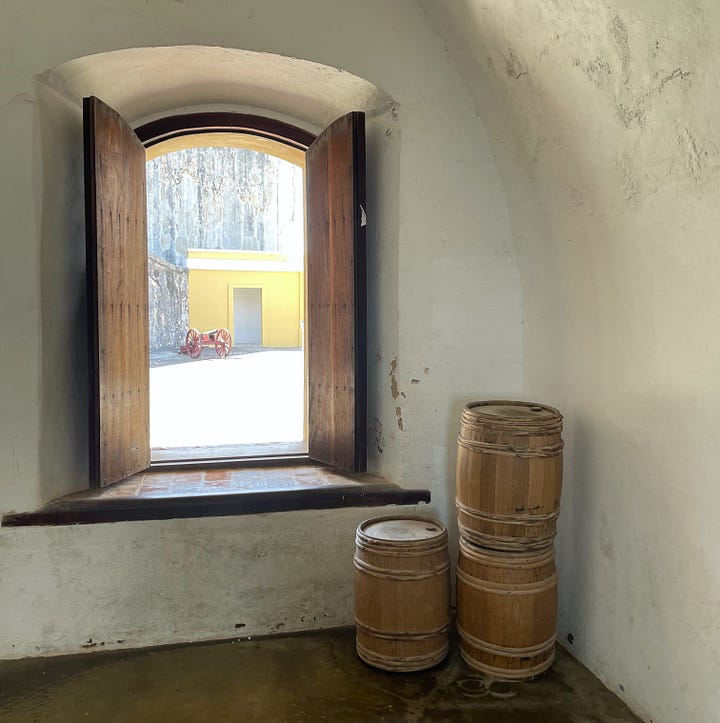
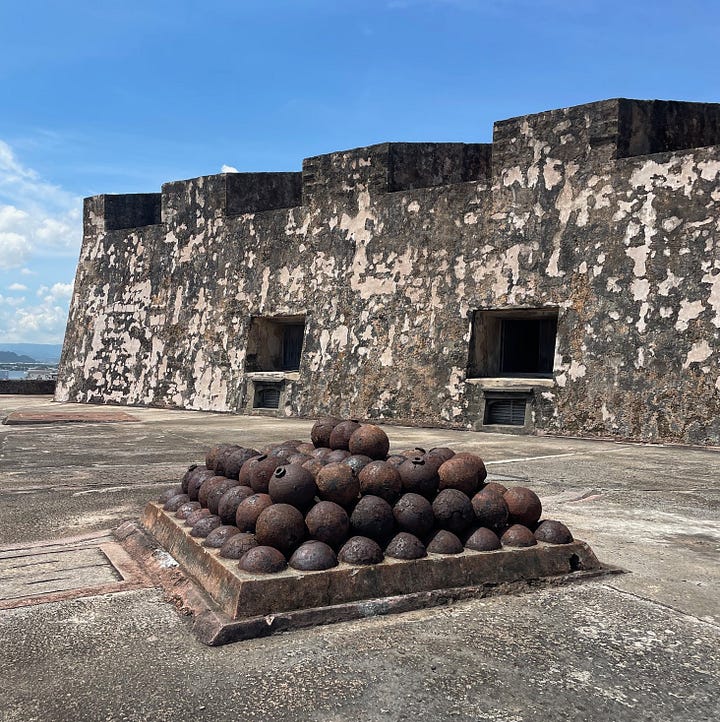
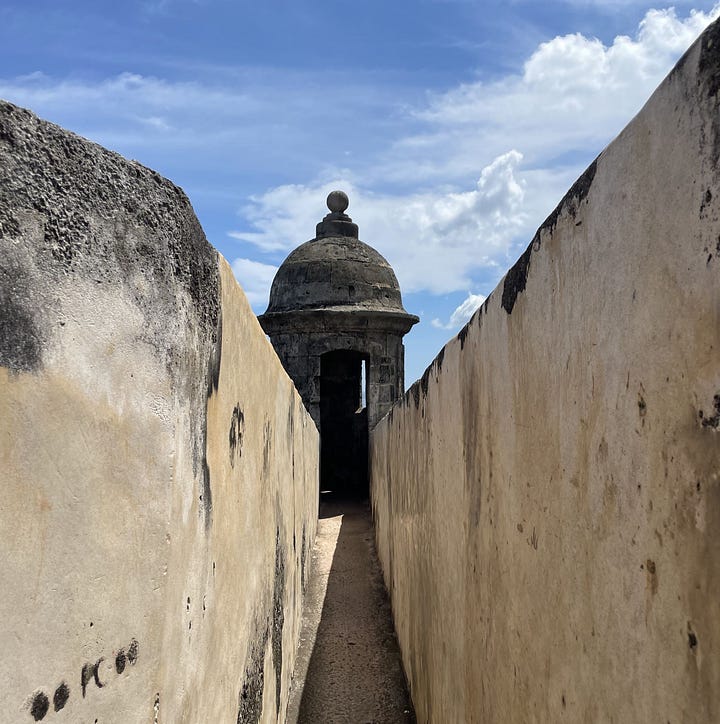
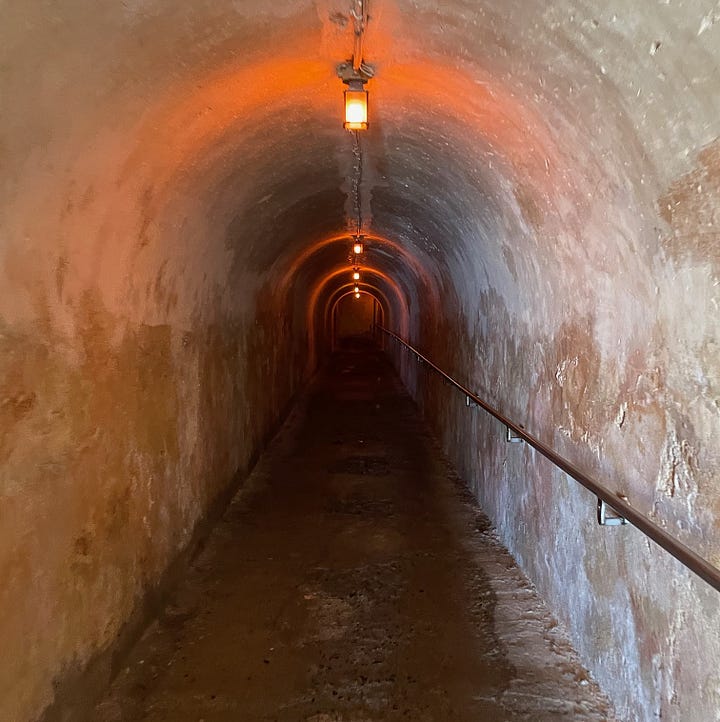
A thorough exploration - at a reasonable pace - takes about 2 hours, especially under the tropical sun. Bring a hat, wear sunscreen, and drink plenty of water because the heat can be intense.
Level 3 is the highest point, the most amazing 360-degree view of everything surrounding Old San Juan: the Atlantic Ocean, La Perla, el Capitolio, Puerta de Tierra, el Escambrón, and, all the way east, the Convention district.
Level 1 is the main plaza, an open space bordered by hallways and casemates - large vaulted rooms with thick walls prepared to house heavy artillery. Back then, these rooms also served as meeting, sleeping, and cooking quarters. They are now used for educational exhibits, with text panels or artifacts showing the Castillo’s history.
With this strategic location, it makes sense why the Spanish Empire - later, the US Army during WWII - regarded this fortress as a prized possession.
The entrance fee also pays for a visit to El Morro within 24 hours, which would make for a great historical tour.
Hasta la próxima.
Yanira


